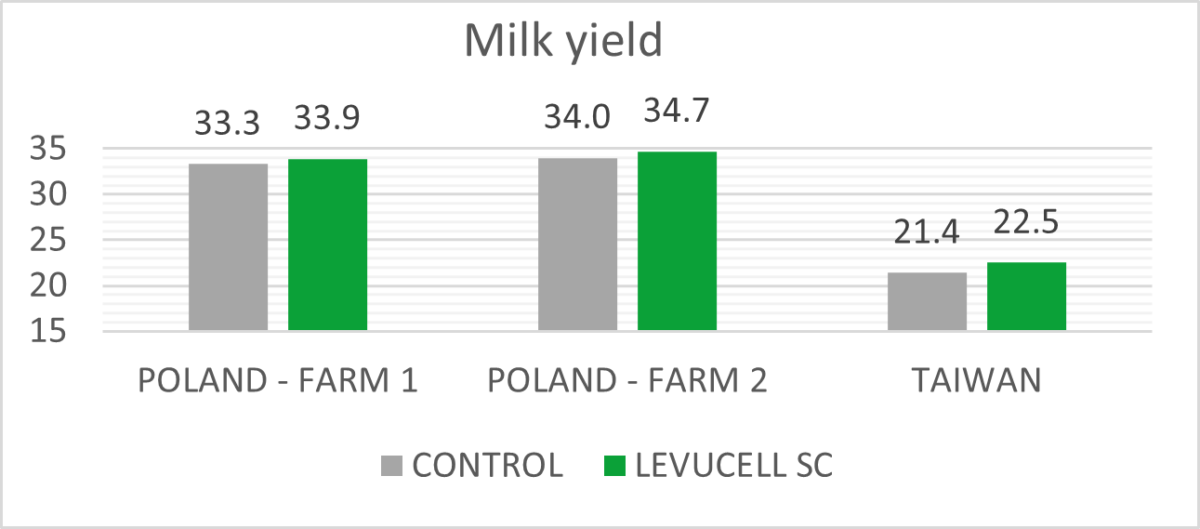Blog | Reading Time 3 minutes
Rumen-specific live yeast can help meet the challenges of heat stress, under different conditions
Poland and Taiwan: Two different climates, one heat stress challenge
Every year, all over the world, new temperature records are reached, with significant heat peaks and long summers. Ruminants are particularly sensitive to high temperatures, as their rumen produces a huge amount of heat due to fermentation. Above the well-known temperature-humidity index (THI) threshold of 68, corresponding to “moderate to severe” heat stress, dairy cows can reduce their feed intake and see their rumen function affected, leading to losses in milk production.
Rumen-specific live yeast can help meet the challenges of heat stress, under different conditions
Ruminants can suffer from heat stress almost anywhere on the planet, and not just at very high temperatures. For example, the 68 THI threshold of moderate heat stress can correspond to a temperature of 21.7°C and a humidity of 55%.
The rumen-specific live yeast Saccharomyces cerevisiae CNCM I-1077 (LEVUCELL SC) can help limit production losses during heat stress periods. In 2021, two new trials were conducted to reinforce our “from science to field” trials on milk performance using the live yeast under heat stress conditions. The trials compared groups of cows fed with the live yeast to control groups in two different regions of the world: one took place in Poland, on two farms, with a period of moderate heat stress for 82 days; and the other in Taiwan, with moderate and severe heat stress continuously for 48 days.
Improvement of rumen pH
In both trials, rumen pH was numerically increased when the rumen-specific live yeast was included in the diet.
For cows in Poland, average reticulum pH was improved by +0.17, from 6.06 to 6.23.
In Taiwan, an improvement was also measured, with a result of +0.06, from 5.84 to 5.91.
Cows with a higher ruminal pH will be less subject to Sub Acute Ruminal Acidosis (SARA), and therefore have better rumen comfort, helping to maintain feed intake during periods of stress.
Maintaining milk production
Once again, in both trials, the milk production is improved, as shown in the Figure 1: +0.65kg milk/cow/day on average on both farms in Poland, and +1.17kg milk/cow/day in Taiwan.
Figure 1: Milk yield measurement in Poland and Taiwan, 2021
Visible signs of well-being under constant conditions of moderate and severe heat stress
In Taiwan, under conditions of important heat stress, animals supplemented with the live yeast showed improved overall well-being. First, rumination activity, a visible sign of well-being, increased by +40%. Second, the number of cows with good body condition scores (>3) improved by +22%, which is known to have a positive long-term effect on fertility.
Collecting heat stress data around the world
“In your specific location, what might be the production losses due to heat stress?” To support the assessment of production losses during periods of heat stress, THI data are regularly collected to enrich the following world map ? CLICK HERE to find out what heat stress can be like around the world, and what production losses are associated with it.
Published Apr 8, 2024 | Updated Apr 10, 2024
Related articles
Need specific information?
Talk to an expert